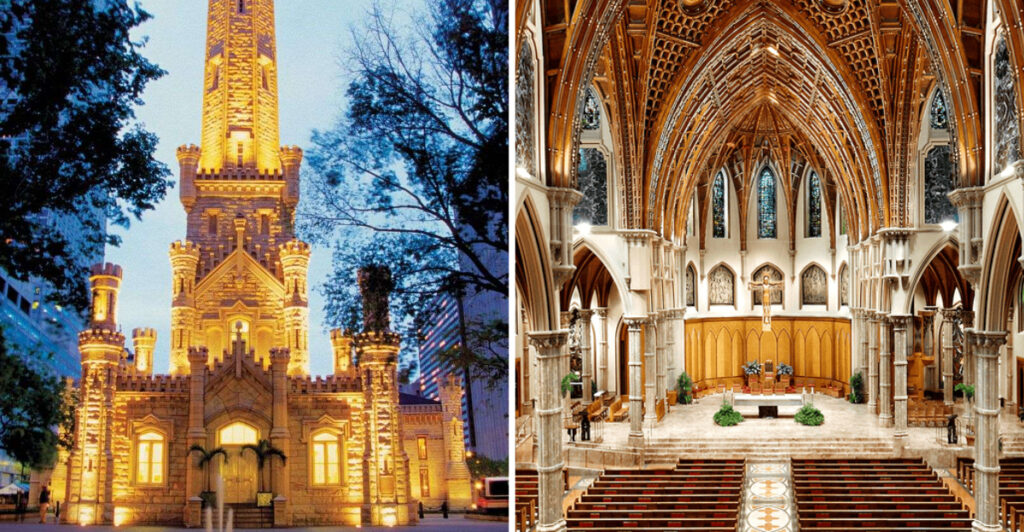Chicago is a haven for architecture enthusiasts, offering a treasure trove of iconic and innovative structures. From historic skyscrapers to contemporary masterpieces, the city’s skyline is a living gallery of architectural brilliance. Each building tells a story of artistic vision and engineering marvel. Let’s explore fifteen must-see architectural gems that make Chicago an unparalleled destination for lovers of design and history.
Willis Tower
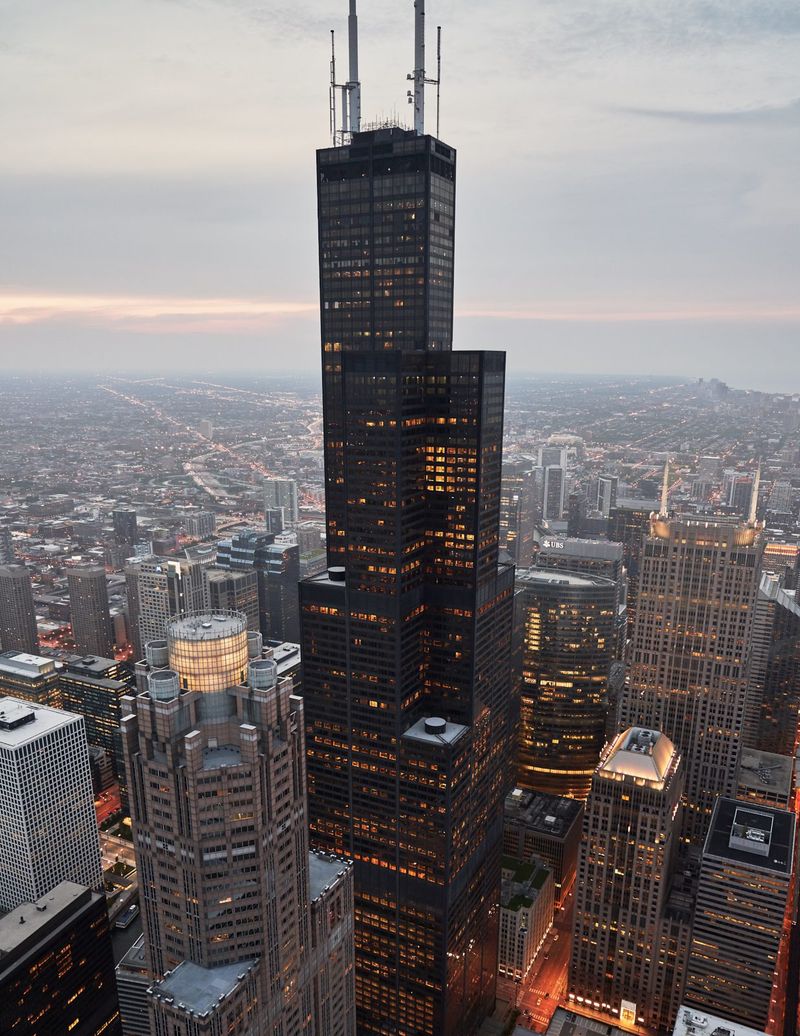
Once the tallest building in the world, the Willis Tower remains a symbol of Chicago’s architectural prowess. Its commanding presence and innovative design make it a favorite among visitors.
The Skydeck offers a thrilling experience with its glass balconies extending outwards, providing breathtaking views of the city below. As you stand on the ledge, the feeling of floating above the bustling streets is unparalleled.
For architecture lovers, the Willis Tower is a testament to human ingenuity and ambition, standing tall as a beacon of modern skyscraper design.
The Rookery Building
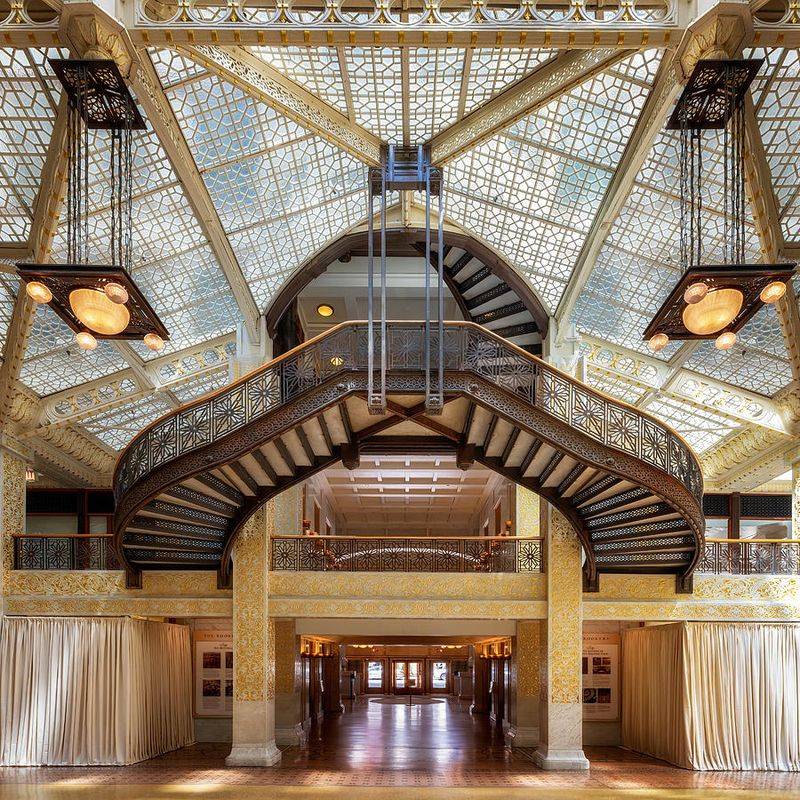
The Rookery Building, with its ornate ironwork and grand entrance, stands as a timeless piece of architectural history. Designed by Burnham and Root, it showcases the transition from traditional to modern architecture.
Frank Lloyd Wright later redesigned the light court, adding a touch of his unique style. The blend of influences creates a captivating ambiance within the building.
Exploring The Rookery offers a journey through architectural evolution, with each corner revealing a story of design innovation and historic significance.
Aqua Tower
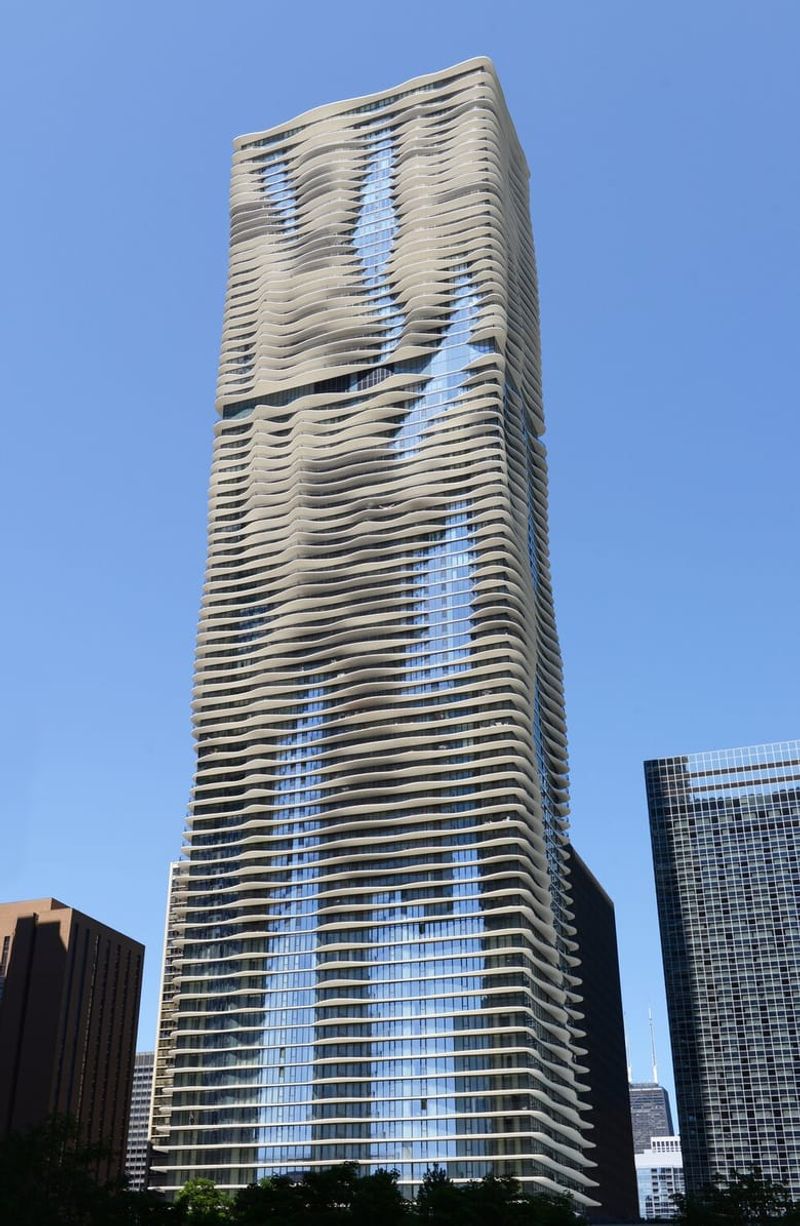
Aqua Tower stands out with its rippling facade, resembling the waves of Lake Michigan. Designed by Jeanne Gang, it embodies the essence of modern architecture with a focus on environmental sustainability.
The building’s design is not just aesthetic but functional, allowing for natural light and energy efficiency. Its unique structure creates a dynamic play of light and shadow.
For those fascinated by contemporary architecture, Aqua Tower is a masterpiece that combines artistic flair with environmental consciousness, redefining urban living spaces.
Robie House
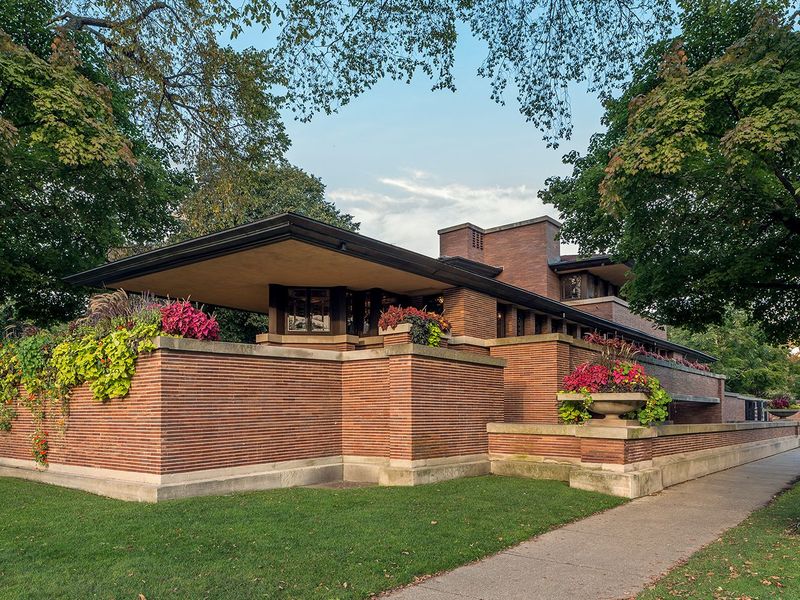
Frank Lloyd Wright’s Robie House is a seminal example of the Prairie School of architecture. Its low, horizontal lines and open spaces reflect a harmony with nature.
The use of natural materials and innovative design concepts make it a precursor to modern residential architecture. The house’s fluid spaces and seamless integration with the landscape offer a glimpse into Wright’s visionary thinking.
Visiting Robie House provides an intimate look at residential design, where functionality meets aesthetics in a timeless architectural marvel.
Tribune Tower
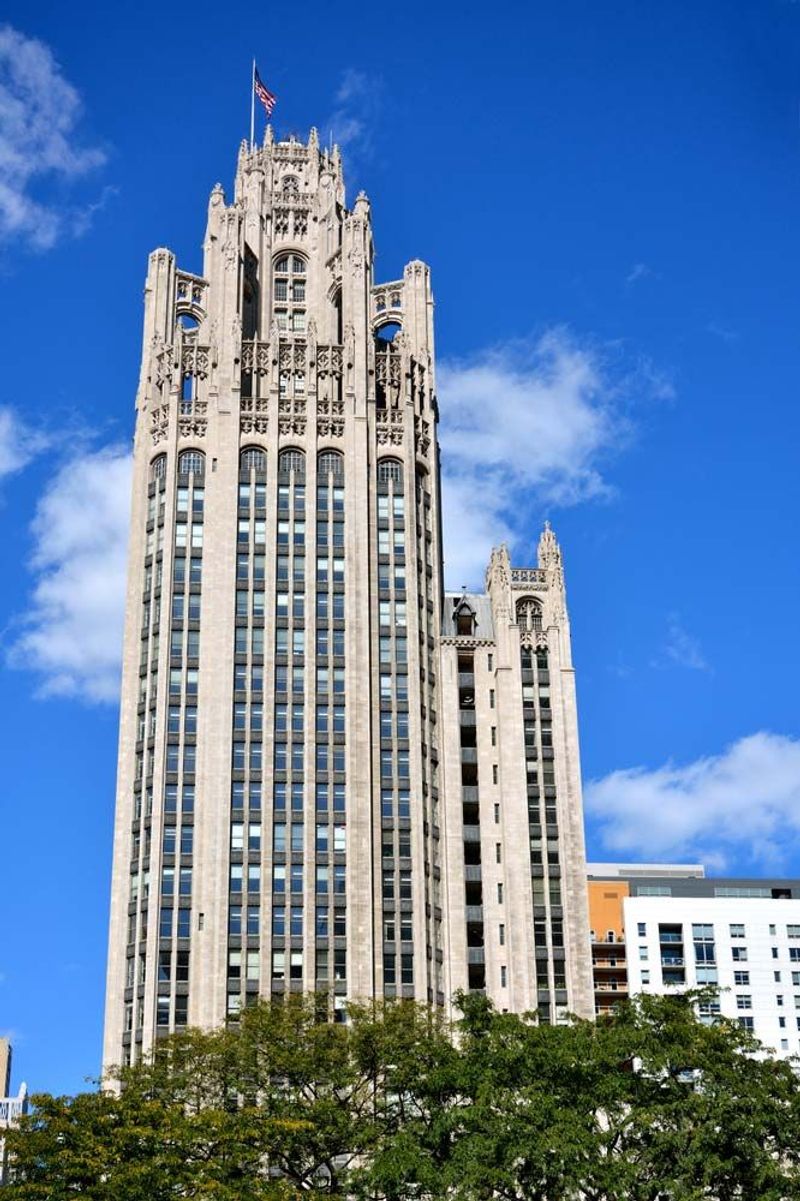
The Tribune Tower stands as a monument to neo-Gothic architecture, with its ornate stone facade and historic fragments from around the world embedded into its walls.
Designed by John Mead Howells and Raymond Hood, the tower’s design was the result of an international competition. Its intricate detailing and artistic elements make it a must-visit for architecture aficionados.
Walking around the Tribune Tower, one can sense the stories and history etched into its very stones, a living testament to architectural elegance and cultural heritage.
Marina City
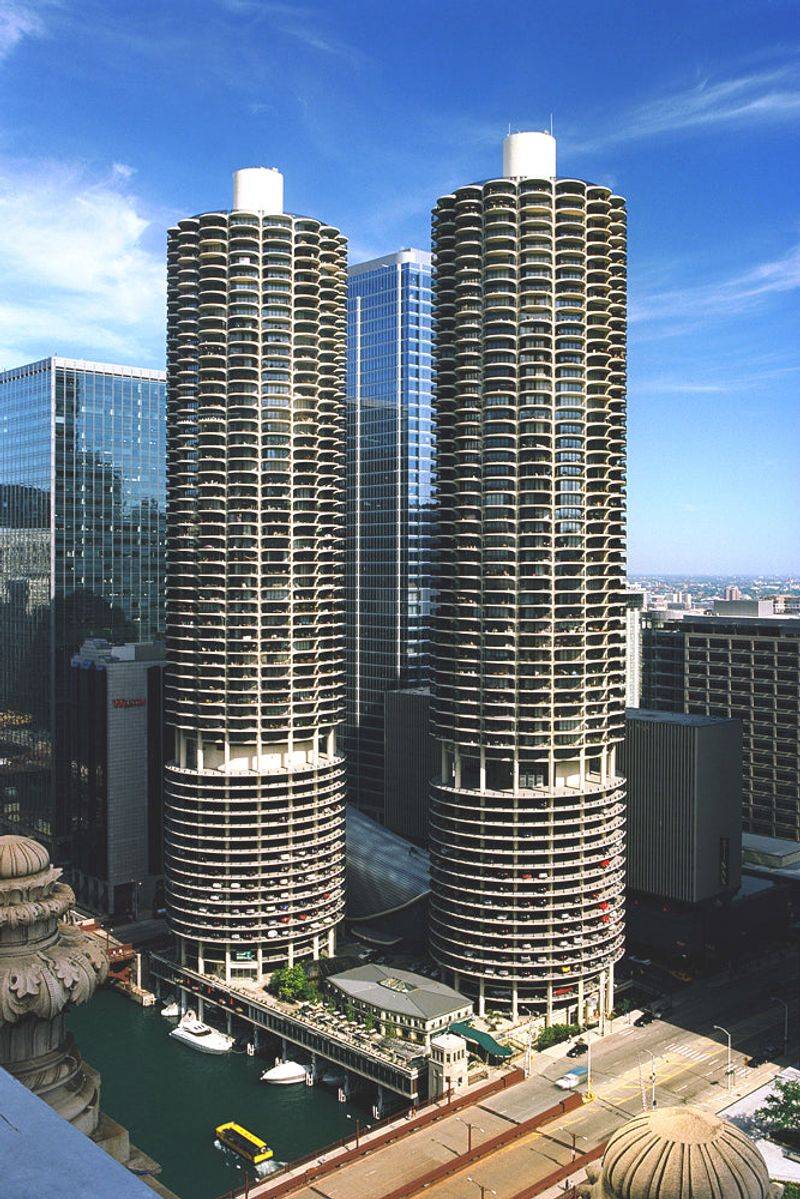
Marina City, also known as the “corn cob” towers, represents a bold leap into modern urban living. Designed by Bertrand Goldberg, these twin towers redefine residential architecture with their unique circular design.
The towers offer a mix of residential, commercial, and entertainment spaces, creating a self-contained city within a city. Their innovative shape stands out against the traditional skyline.
Exploring Marina City offers a glimpse into mid-century modern design, where architectural creativity meets functional urban planning in a harmonious blend.
Chicago Cultural Center
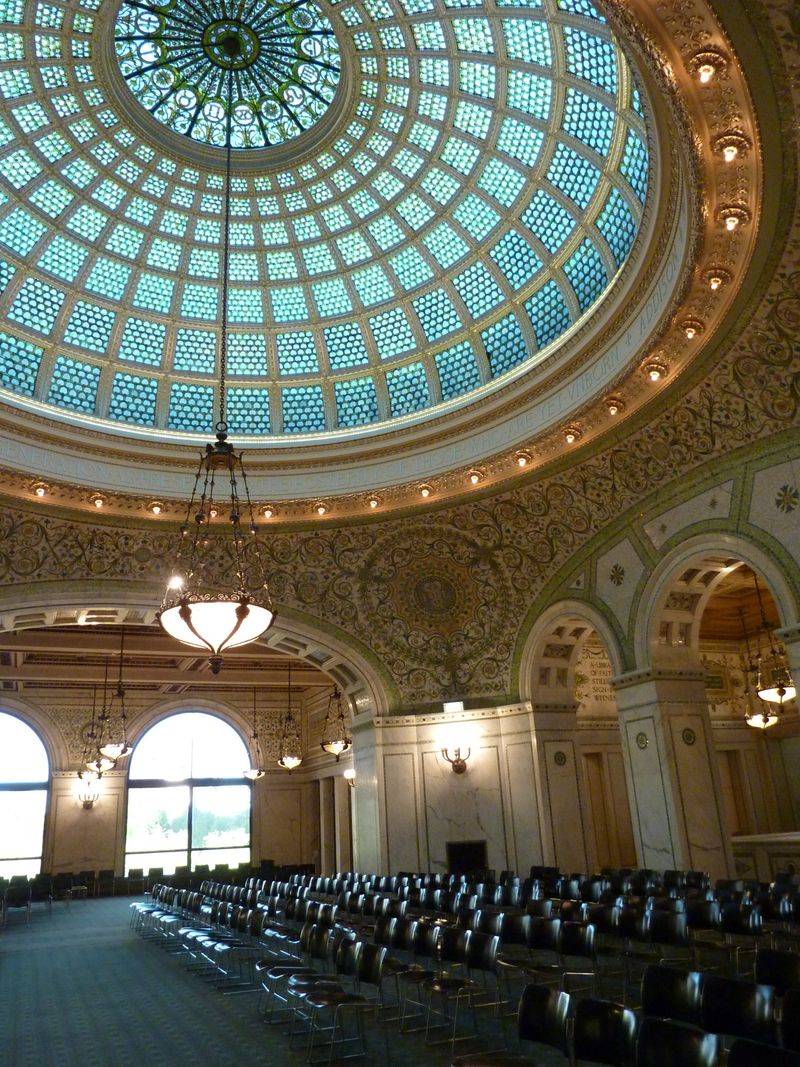
The Chicago Cultural Center is a gem of Beaux-Arts architecture, known for its stunning stained-glass domes and grand interiors. Originally the city’s first public library, it now serves as a vibrant cultural hub.
The building’s Tiffany dome, the largest in the world, is a magnificent sight, casting a kaleidoscope of colors across the space below. The intricate detailing throughout the center reflects a dedication to artistic excellence.
Visiting the Cultural Center offers a rich experience of art and architecture, where history and creativity converge in a beautiful urban setting.
John Hancock Center
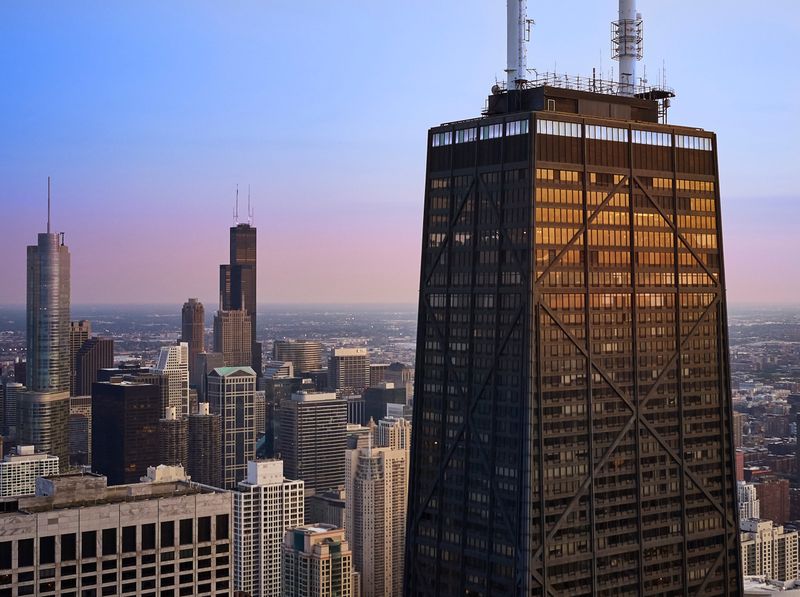
The John Hancock Center, with its sleek form and distinctive X-bracing, is an icon of modern engineering. Its bold design and towering presence make it a standout on the Chicago skyline.
The building offers a thrilling experience with its 360-degree observation deck, providing panoramic views of the city and lake. The innovative engineering behind its design reflects a bold step in skyscraper construction.
For those fascinated by architectural feats, the John Hancock Center is a symbol of innovation and modernity, a must-see for anyone visiting Chicago.
Wrigley Building
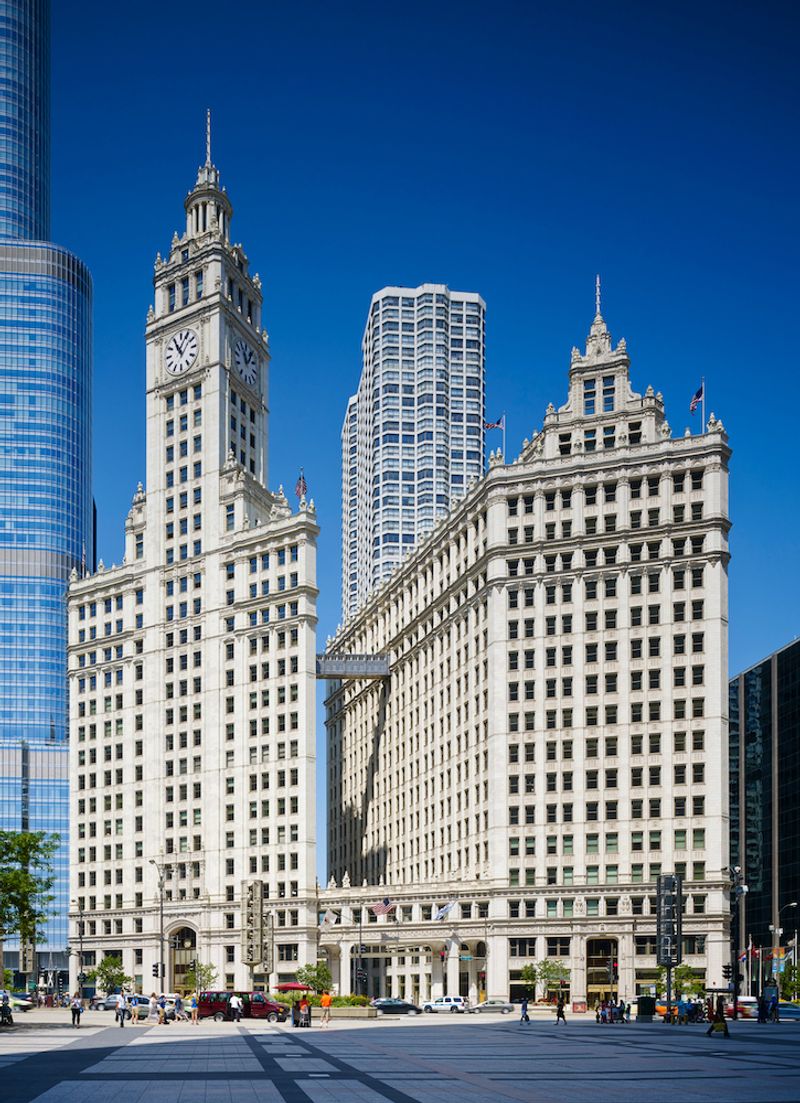
The Wrigley Building, with its gleaming white facade and iconic clock tower, is a beacon of elegance along the Chicago River. Designed by Graham, Anderson, Probst & White, it draws inspiration from the Renaissance Revival style.
Its twin towers and ornate detailing make it a favorite subject for photographers and architecture buffs alike. The building’s night-time illumination showcases its intricate design.
Strolling by the Wrigley Building offers a visual feast, where historic charm meets architectural grandiosity in a captivating urban landscape.
Pritzker Pavilion
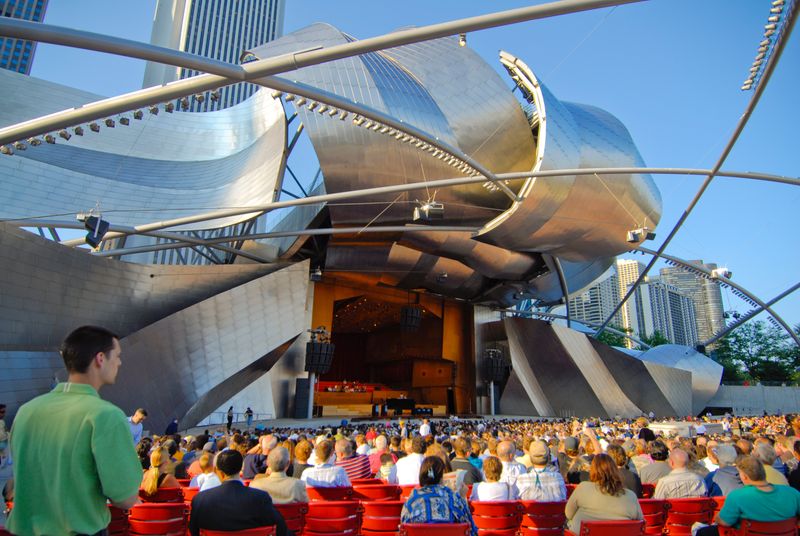
Nestled in Millennium Park, the Pritzker Pavilion is a marvel of modern architectural design. Created by Frank Gehry, its flowing stainless steel ribbons create a dynamic stage for outdoor performances.
The pavilion’s state-of-the-art sound system and open-air design make it a favorite venue for music lovers. Its innovative form reflects Gehry’s signature style, blending functionality with artistic expression.
Visiting the Pritzker Pavilion offers an experience of sound and architecture harmoniously intertwined, where music and design come together in an open urban space.
Chicago Water Tower
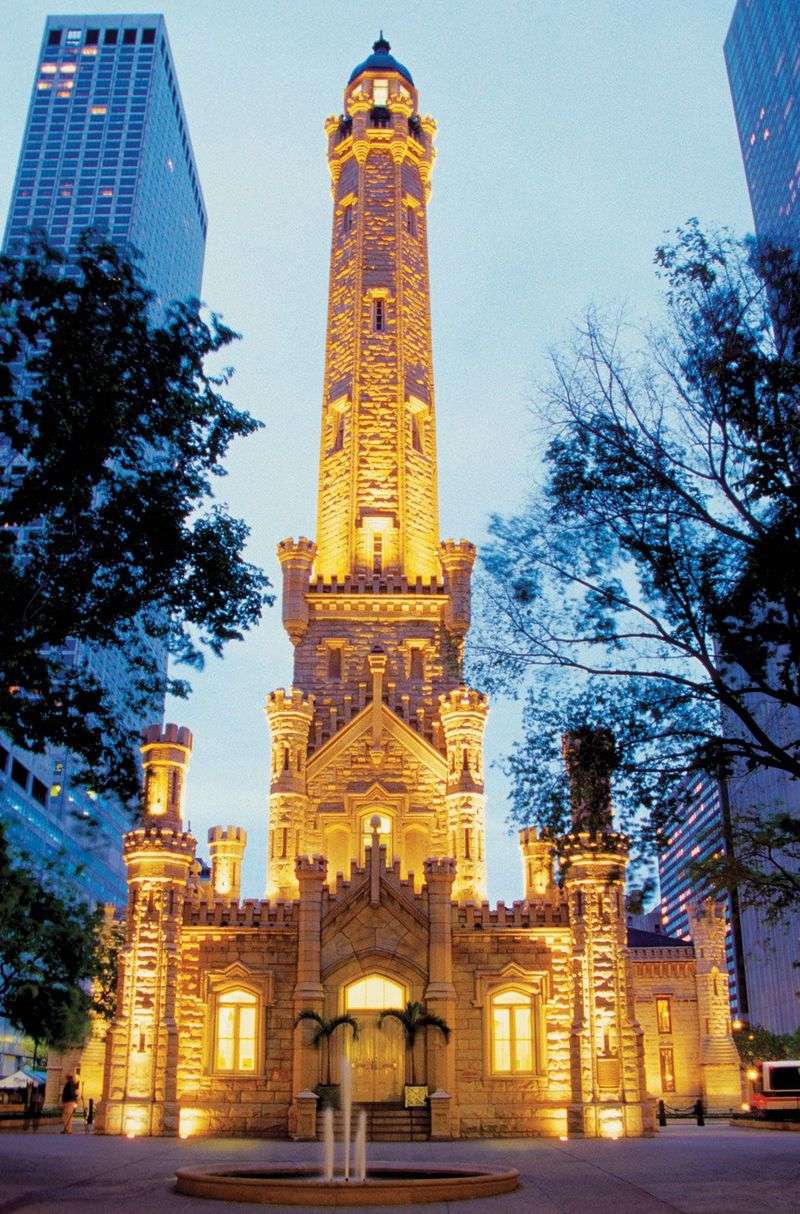
The Chicago Water Tower is a symbol of resilience, standing tall amidst the modern skyscrapers. Built in Gothic Revival style, it survived the Great Chicago Fire, becoming a symbol of the city’s rebirth.
Its castle-like structure with turrets and spires adds a touch of history to the bustling urban landscape. The tower’s charm lies in its simplicity and historic significance.
For architecture enthusiasts, the Water Tower offers a glimpse into the past, where history and beauty coexist, narrating a tale of survival and architectural grace.
875 North Michigan Avenue
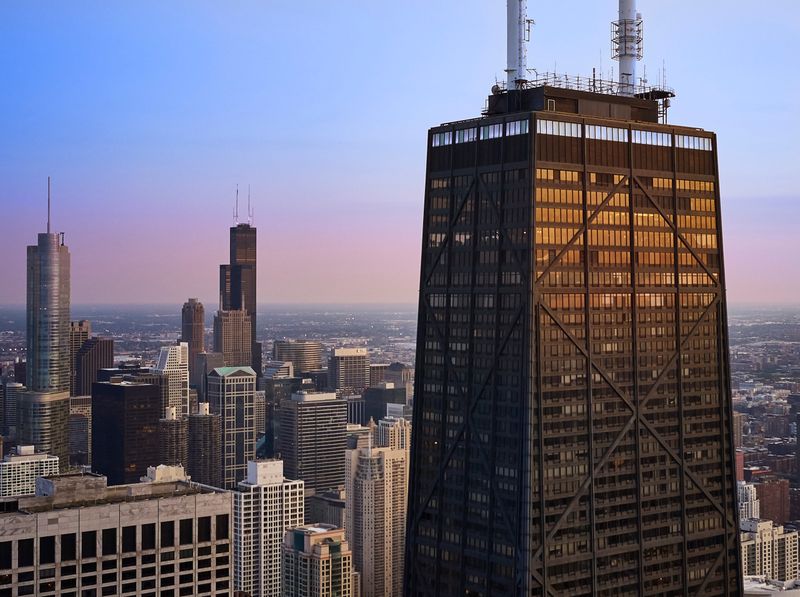
Formerly known as the John Hancock Center, 875 North Michigan Avenue is a marvel of structural engineering. Its tubular design and sleek black facade make it an architectural icon.
The building’s observation deck offers breathtaking views, while its innovative design reflects a pioneering spirit in skyscraper construction. The X-bracing not only adds to its aesthetic appeal but also to its structural integrity.
For those interested in engineering marvels, this building is a testament to Chicago’s architectural ingenuity and a must-see for any visitor.
Sears Tower
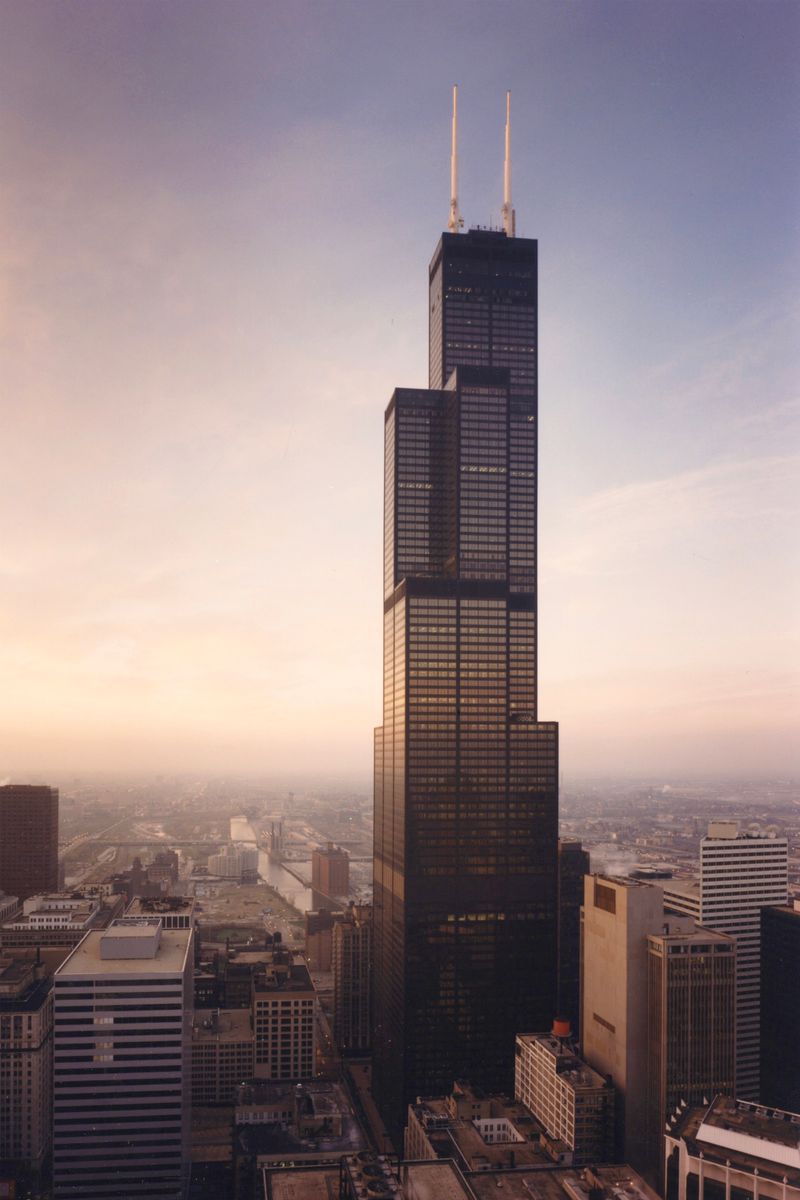
The Sears Tower, now known as Willis Tower, once held the title of the world’s tallest building. Its sleek lines and towering presence make it a landmark in Chicago’s architectural landscape.
The Skydeck’s glass ledge offers an exhilarating perspective of the city, providing a unique experience for those daring enough to step out. Its design is a testament to the ambitions of modern architecture.
Visiting the Sears Tower offers a view of architectural greatness, where height and design converge to create an unforgettable urban experience.
Chicago Spire
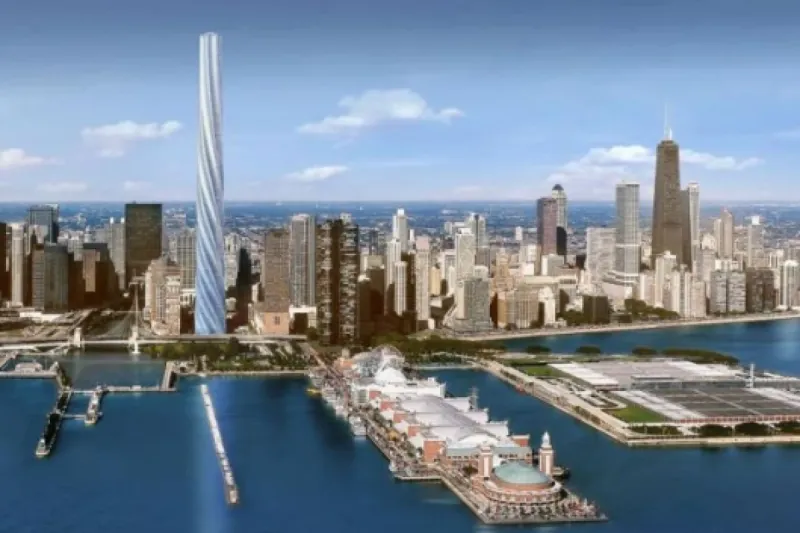
The Chicago Spire remains an ambitious vision that never came to fruition. Conceived by architect Santiago Calatrava, its twisting form was designed to be the tallest in the Western Hemisphere.
Though never built, the Spire’s plans reflect a bold step towards futuristic architecture. Its spiraling design was intended to redefine the skyline and push the boundaries of engineering.
The story of the Chicago Spire offers insight into architectural ambition and innovation, a fascinating what-if in the city’s skyline that continues to inspire imagination.
Holy Name Cathedral
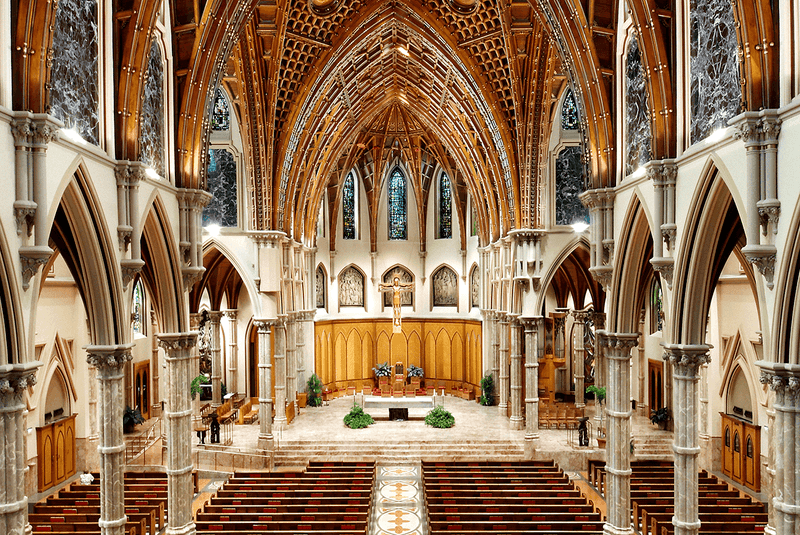
Holy Name Cathedral, with its soaring spires and intricate detailing, is a masterpiece of Gothic Revival architecture. Its stunning interior and spiritual ambiance make it a place of tranquility amid the city’s hustle.
The cathedral’s wooden ceiling, reminiscent of a ship’s hull, adds to its architectural charm. The labyrinthine design invites reflection and admiration.
For those drawn to religious architecture, Holy Name Cathedral offers a serene escape, where beauty and spirituality coexist in a sacred urban sanctuary.

